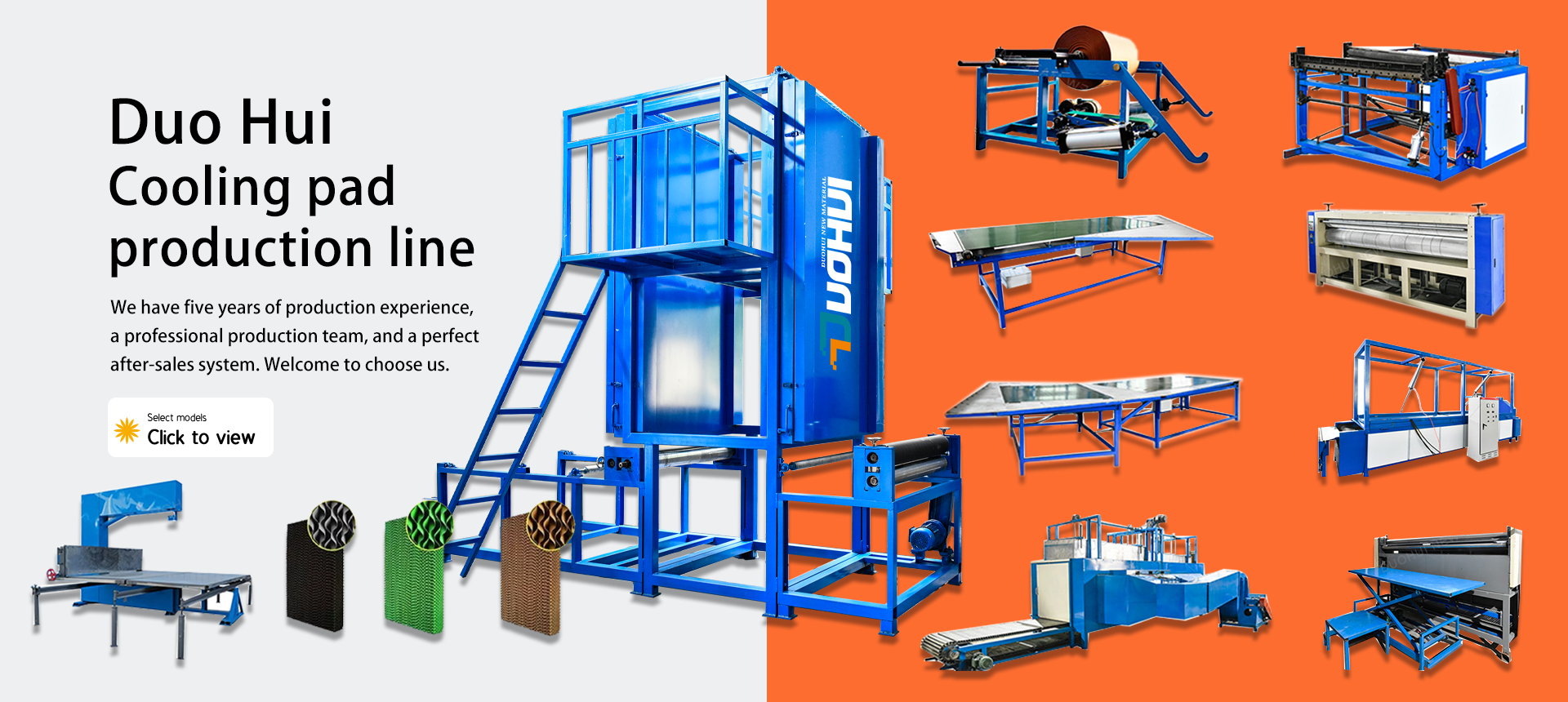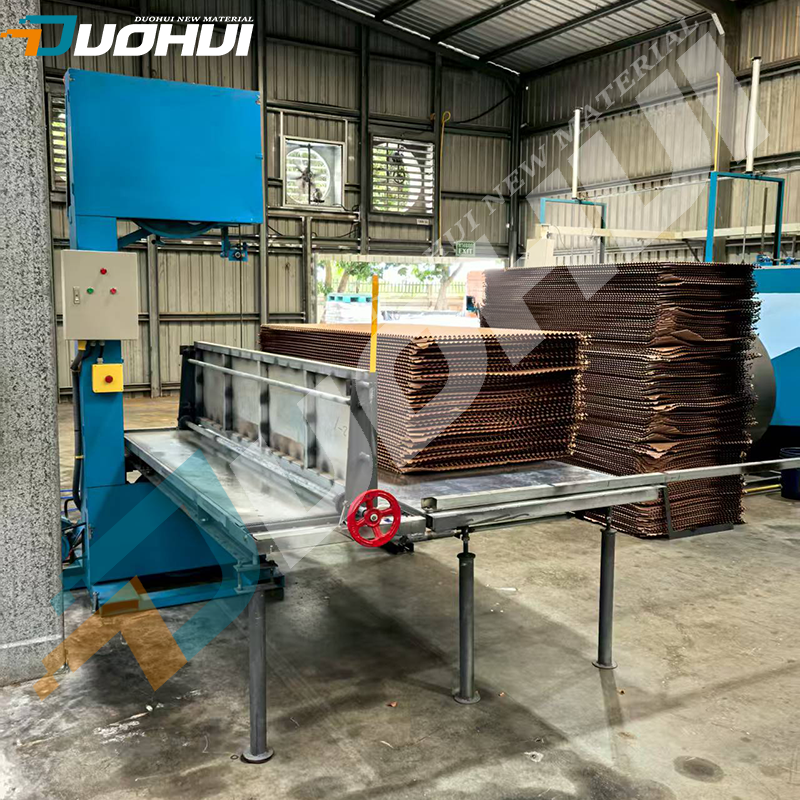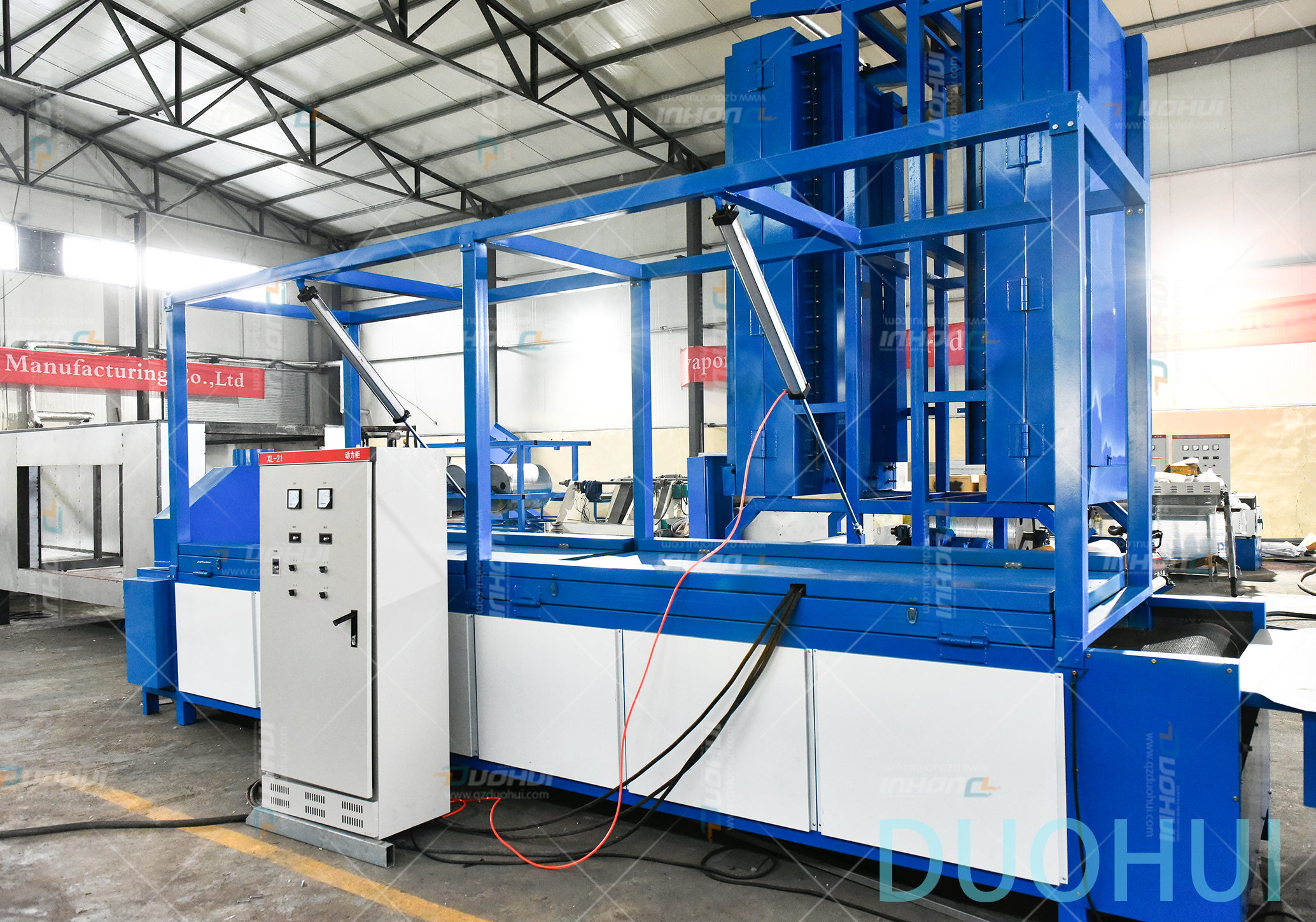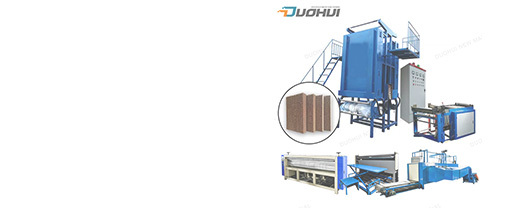
Cooling Pad Production Lines
2025-10-27 14:44
Cooling Pad Production Lines: A Pivotal Force Driving Transformation in Global Agriculture and Animal Husbandry

In the contiguous tomato planting bases of Almería, Spain—one of Europe's largest greenhouse agricultural hubs—a cooling pad system produced by a Dutch equipment manufacturer is operating steadily. Driven by a circulating water pump and paired with negative-pressure fans, the temperature inside the greenhouse remains 8°C lower than the outdoor temperature even during the sweltering summer months. Local farmers note that this system has increased tomato fruit-setting rates by 12% and extended the harvest season by three weeks. This scenario fully reflects the growing global penetration trend of cooling pad production lines in modern agriculture and animal husbandry. Data shows that in 2024, the global market size for agricultural cooling pads exceeded 2.6 billion, with an annual growth rate of over 10% in both sectors.
Physical Cooling Technology Lays a Solid Foundation for Green Production
The core advantage of cooling pad production lines lies in their environmental protection attributes and efficient cooling mechanism, whose working principle can be broken down into three key links: "water circulation, evaporative heat absorption, and air exchange." Firstly, the corrugated fiber pads customized by the production line are continuously wetted through a bottom water circulation system, forming a uniform water film. Subsequently, external hot air is drawn through the pads by negative-pressure fans, causing the water film to evaporate rapidly, absorbing a large amount of heat from the air and achieving a sudden temperature drop. Finally, the cooled air forms a circulating airflow in the enclosed space, completing the dual regulation of ambient temperature and humidity. The entire process requires no chemical refrigerants, relying solely on the physical phase change of water for cooling. A single system can process 5,000 to 20,000 cubic meters of air per hour, with a stable cooling range of 5°C to 10°C.
Compared with traditional mechanical refrigeration, cooling pad systems reduce operating costs by more than 60% and emit no pollutants throughout the entire process. The CoolPad Pro series cooling pads developed by a German manufacturer, which optimize pad porosity and fiber density through advanced production line technology, still maintain an 85% heat exchange efficiency after 48 months of continuous operation in the high-temperature and high-humidity environment of Saudi Arabia, with a service life nearly double that of earlier products.
"In the past, we used air conditioning for cooling, and the monthly electricity cost for a 10,000-head pig farm exceeded $4,200. Now, with the cooling pad system, the electricity bill has been cut in half," said the person in charge of a large-scale pig farm in Iowa, USA. This energy-saving advantage has also been recognized at the policy level. The European Union's "Farm to Fork Strategy" clearly requires that the penetration rate of high-efficiency and energy-saving temperature control equipment in agricultural facilities reach 60% by 2025, and cooling pad systems have become the core equipment to achieve this goal.
Precise Regulation Drives Industrial Efficiency Upgrading
In the field of agricultural planting, the controlled environment built by cooling pad production lines significantly improves crop quality. In the Westland region of the Netherlands, known as the "Flower Capital of the World," a flower greenhouse adopts an intelligent cooling pad system to stabilize humidity within the range of 65% ± 5%. This measure has shortened the flowering cycle of Phalaenopsis by 10 days and increased the proportion of Grade A flowers from 68% to 82%. This achievement benefits from the modular design of the production line—it can customize pad thickness and arrangement density according to the greenhouse area, and realize dynamic regulation in combination with temperature and humidity sensors.
The animal husbandry industry is an even more major beneficiary of cooling pad technology. High temperatures in summer easily cause heat stress in livestock, increasing mortality by more than 15%. After installing cooling pad systems, the feed intake of pig herds in a Brazilian beef cattle and pig breeding base has increased by 8%, and the fattening cycle has been shortened by 7 days; the egg production rate of laying hens in an Australian farm has remained stable above 92%, and the egg breakage rate has decreased by 40%. In 2024, the penetration rate of cooling pads in large-scale livestock farms in North America reached 65%, driving a 9% increase in the unit output value of the regional animal husbandry industry.
Full-Scenario Adaptability Accelerates Market Penetration
The strong adaptability of cooling pad production lines breaks down scenario limitations. Whether it is large-scale multi-span greenhouses, small and medium-sized farm sheds, pig and beef cattle breeding farms, or edible fungus cultivation workshops, customized production can meet the needs. The HydroCool series cooling pads developed by a Canadian enterprise, relying on anti-algal coatings and automatic cleaning functions, have achieved "three-year maintenance-free operation" in high-humidity poultry farms in Southeast Asia, reducing maintenance costs by 50%.
Innovation in raw materials has further expanded the application scope. Some international manufacturers use recycled plant fibers instead of imported wood pulp, which not only reduces raw material costs by 40% but also improves the corrosion resistance of the pads. In 2023, the export volume of cooling pads from major producing countries such as the Netherlands, Germany, and the United States reached $190 million, with strong demand in high-temperature regions such as the Middle East and North Africa, making them a representative product of high-quality global agricultural equipment.
Industry experts point out that with the integration of material innovation and intelligent control technology, cooling pad production lines will upgrade to composite systems featuring "solar-driven + rainwater recycling." In the next three years, their penetration rate in the protected agriculture field is expected to increase from the current 42% to 60%, providing core impetus for the global green transformation of agriculture.

Get the latest price? We'll respond as soon as possible(within 12 hours)








